Role Writer | Name Charles Guiteau Spouse(s) Annie Bunn (divorced) | |
 | ||
Full Name Charles Julius Guiteau Occupation Preacher, writer, lawyer Criminal charge Assassination of President James A. Garfield Parent(s) Luther Wilson Guiteau, Jane Howe Guiteau Died June 30, 1882, Washington, D.C., United States Books The Truth a Companion to the Bible: A Book for Everyone to Read Similar People James A Garfield, Leon Czolgosz, Lucretia Garfield, Roscoe Conkling, William McKinley | ||
Criminal penalty Death by hanging Criminal status Capital punishment | ||
The assassination of james garfield
Charles Julius Guiteau (; September 8, 1841 – June 30, 1882) was an American writer and lawyer who was convicted of the assassination of James A. Garfield, the 20th President of the United States. Guiteau was so offended by Garfield's rejections of his various job applications that he shot him at the Baltimore and Potomac Railroad Station in Washington, D.C. on July 2, 1881. Garfield died two months later from infections related to the injury. In January 1882, Guiteau was sentenced to death for the crime, and was hanged five months later.
Contents
- The assassination of james garfield
- Meet the assassins charles j guiteau and edward fraim
- Early life and education
- Career
- Assassination of Garfield
- Trial and execution
- Psychological assessment
- In popular culture
- References
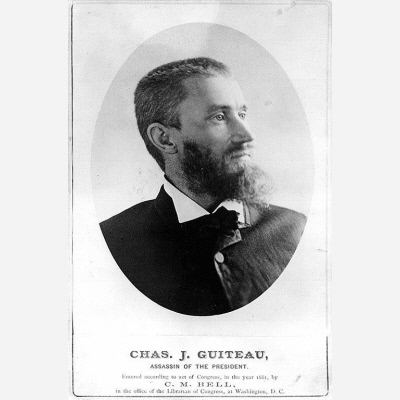
Meet the assassins charles j guiteau and edward fraim
Early life and education
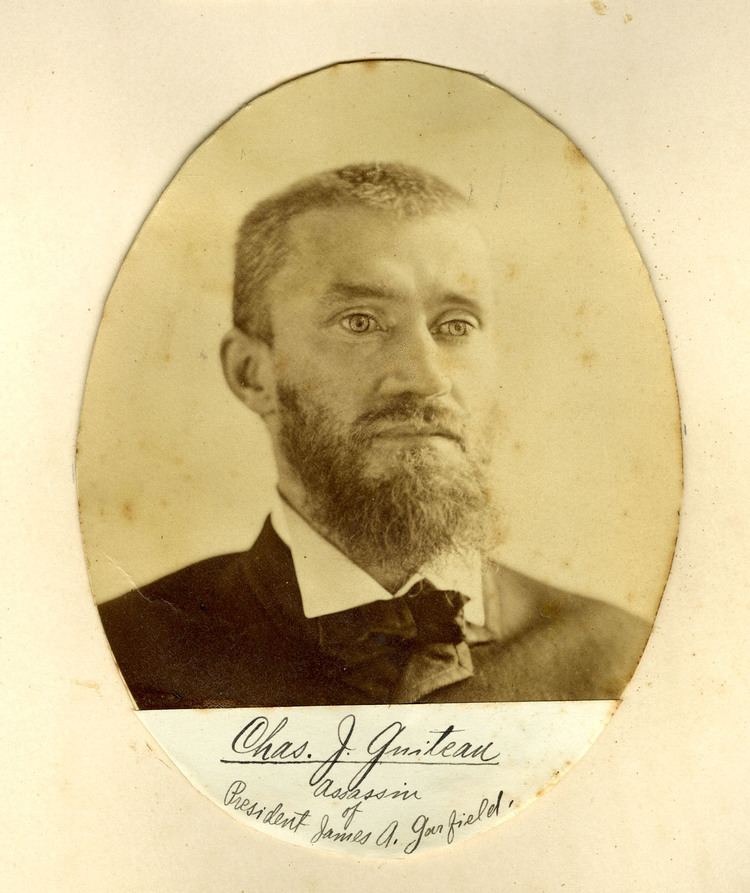
Guiteau was born in Freeport, Illinois, the fourth of six children of Jane August (née Howe) and Luther Wilson Guiteau, whose family was of French Huguenot ancestry. He moved with his family to Ulao, Wisconsin (near current-day Grafton) in 1850 and lived there until 1855, when his mother died. Soon after, Guiteau and his father moved back to Freeport.
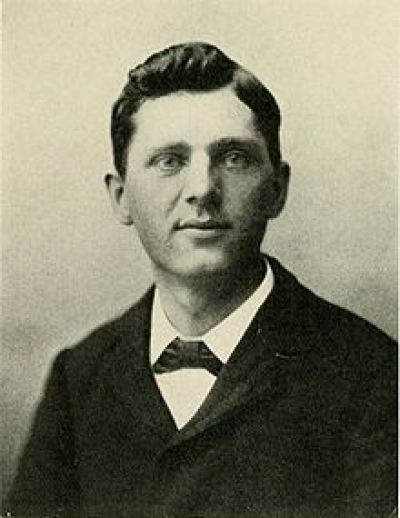
He inherited $1,000 from his grandfather as a young man and went to Ann Arbor, Michigan, in order to attend the University of Michigan. Due to inadequate academic preparation, he failed the entrance examinations. Despite cramming in French and algebra at Ann Arbor High School, during which time he received numerous letters from his father concerning his progress, he quit, and in June 1860 joined the utopian religious sect the Oneida Community, in Oneida, New York, with which Guiteau's father already had close affiliations. According to Brian Resnick of The Atlantic, Guiteau "worshiped" the group's founder, John Humphrey Noyes, once writing that he had "perfect, entire and absolute confidence in him in all things."
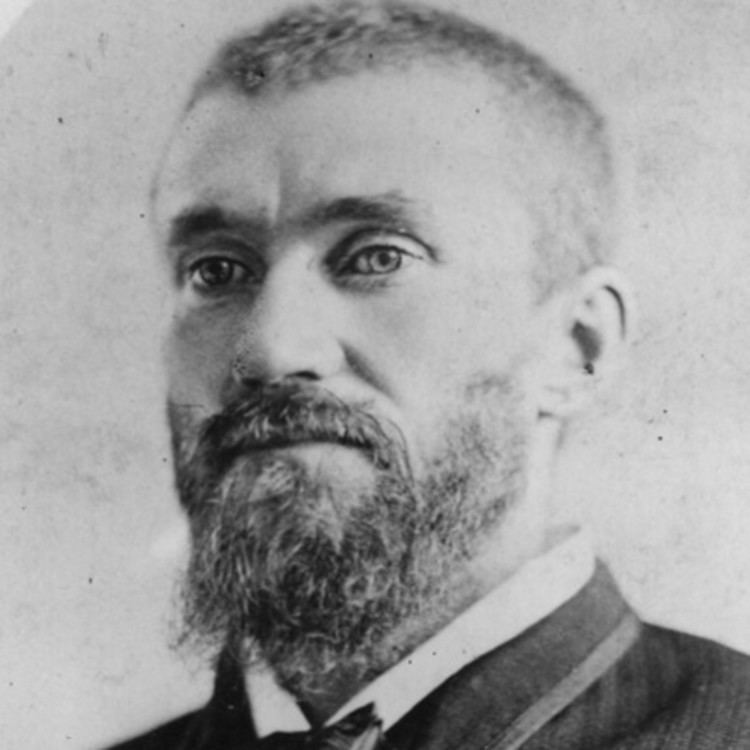
Despite the "group marriage" aspects of that sect, he was generally rejected during his five years there, and was nicknamed "Charles Gitout". He left the community twice. After leaving, he went to Hoboken, New Jersey, and attempted to start a newspaper based on the Oneida religion called The Daily Theocrat. This failed and he returned to Oneida, only to leave again and file lawsuits against Noyes. Guiteau's father, embarrassed, wrote letters in support of Noyes, who had considered Guiteau irresponsible and insane. By 1875, Guiteau's father was convinced that his son was possessed by Satan. Conversely, Guiteau himself became increasing convinced that his actions were divinely inspired, and that his destiny was "preach a new Gospel" like Paul the Apostle.
Career
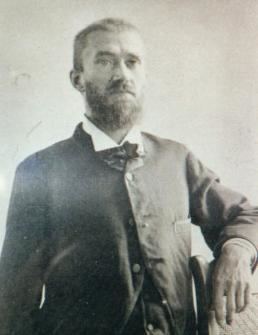
Guiteau then obtained a law license in Chicago, based on an extremely casual bar exam. He was not successful. He argued only one case in court, the bulk of his business being in bill collecting. His former wife later detailed his dishonest dealings, describing how he would keep disproportionate amounts of the bill and rarely give the money to his clients.
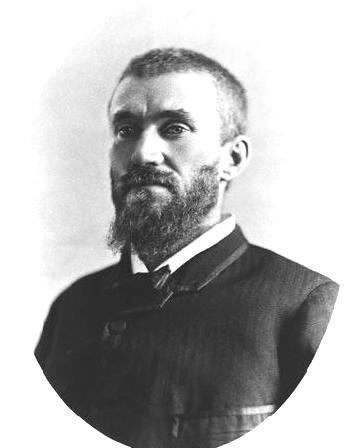
He next turned to theology. He published a book on the subject called The Truth which was almost entirely plagiarized from the work of Noyes. He wandered from town to town lecturing to any and all who would listen to his religious ramblings, and in December 1877 gave a lecture at the Congregational Church in Washington, D.C.
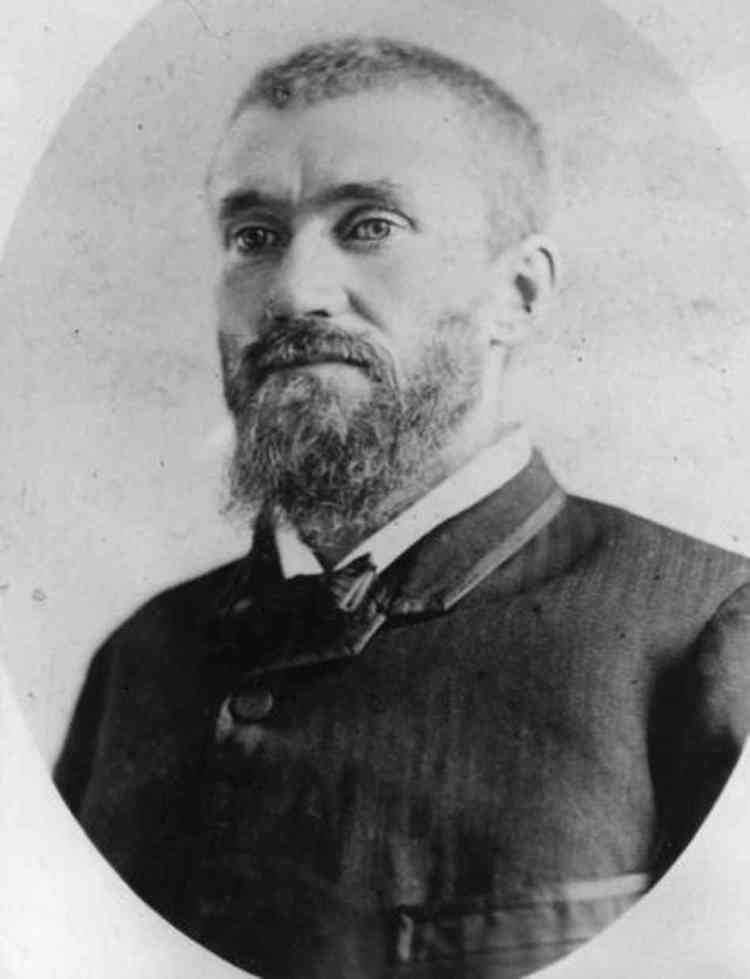
Guiteau spent the first half of 1880 in Boston, which he left owing money and under suspicion of theft. On June 11, 1880, he was a passenger on the SS Stonington when it collided with the SS Narragansett at night in heavy fog. The Stonington was able to return to port, but the Narragansett burned to the waterline and sank, with significant loss of life. Although none of his fellow passengers on the Stonington were injured, the incident left Guiteau believing that he had been spared for a higher purpose.
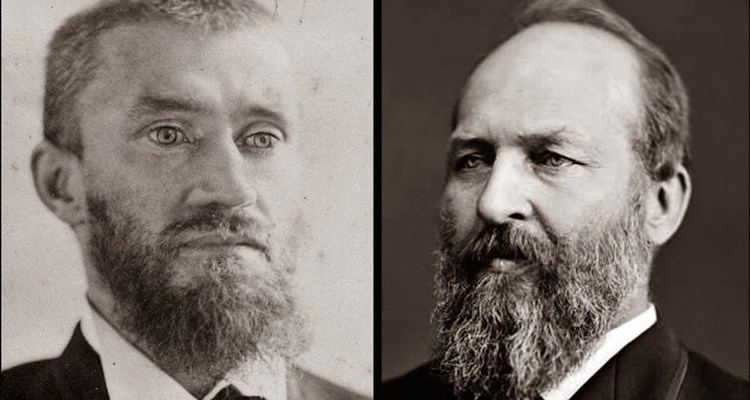
Guiteau's interest then turned to politics. He wrote a speech in support of Ulysses S. Grant called "Grant against Hancock", which he revised to "Garfield against Hancock" after Garfield won the Republican nomination in the 1880 presidential campaign. Ultimately, he changed little more than the title and any mention of Grant in the speech itself. The speech was delivered at most twice, and copies were passed out to members of the Republican National Committee at their summer 1880 meeting in New York, but Guiteau believed himself to be largely responsible for Garfield's victory. When on trial, Guiteau stated that his speech elected Mr. Garfield President of The United States. He insisted he should be awarded an ambassadorship for his vital assistance, first asking for Vienna, then deciding that he would rather be posted in Paris. His personal requests to Garfield and to cabinet members as one of many job seekers who lined up every day were continually rejected. At this time, Guiteau was destitute and forced to walk around snowy Washington, D.C., without a coat or boots. On May 14, 1881, he was finally told never to return by Secretary of State James G. Blaine. Guiteau is actually believed to have encountered Blaine on more than one occasion.
Assassination of Garfield
Guiteau felt that God told him to kill the president; he felt that such an act would be a "removal" as opposed to an assassination. He felt that Garfield needed to be killed to rid the Republican Party of Blaine. Borrowing $15 from a Mr. Maynard, Guiteau went out to purchase a revolver. He knew little about firearms, but did know that he would need a large caliber gun. He had to choose between a .442 Webley caliber British Bulldog revolver with wooden grips or one with ivory grips. He chose the one with the ivory handle because he wanted it to look good as a museum exhibit after the assassination. Though he could not afford the extra dollar, the store owner dropped the price for him. He spent the next few weeks in target practice – the kick from the revolver almost knocked him over the first time – and stalking Garfield. The revolver was recovered after the assassination, and even photographed by the Smithsonian in the early 20th century, but it has since been lost.
On one occasion Guiteau trailed Garfield to the railway station as the President was seeing his wife off to a beach resort in Long Branch, New Jersey, but he decided to postpone his plan because Garfield's wife, Lucretia, was in poor health and Guiteau did not want to upset her. On July 2, 1881, he lay in wait for Garfield at the since demolished Baltimore and Potomac Railroad Station, getting his shoes shined, pacing, and engaging a cab to take him to the jail later. As Garfield entered the station, looking forward to a vacation with his wife in Long Branch, Guiteau stepped forward and shot Garfield twice from behind, the second shot piercing the first lumbar vertebra but missing the spinal cord. As he surrendered to authorities, Guiteau said: "I am a Stalwart of the Stalwarts. ... [Chester A.] Arthur is president now!"
After a long, painful battle with infections, possibly brought on by his doctors' poking and probing the wound with unwashed hands and non-sterilized instruments, Garfield died on September 19, eleven weeks after being shot. Most modern physicians familiar with the case state that Garfield would have easily recovered from his wounds with sterile medical care, which was common in the United States ten years later, while Candice Millard argues that Garfield would have survived Guiteau's bullet wound had his doctors simply left him alone. Garfield's biographer Allan Peskin stated that medical malpractice did not contribute to Garfield's death; the inevitable infection and blood poisoning that would ensue from a deep bullet wound resulted in damage to multiple organs and spinal bone fragmentation.
Trial and execution
Once Garfield died, the government officially charged Guiteau with murder. He was formally indicted on October 14, 1881, on the charge of murder, which was previously attempted murder after his arrest. Guiteau pleaded not guilty to the charge. The trial began on November 14, 1881, in Washington, D.C. The presiding judge in the case was Walter Smith Cox. Guiteau's court-appointed defense lawyers were Leigh Robinson and George Scoville, although Guiteau would insist on trying to represent himself during the entire trial. Wayne MacVeagh, the U.S. Attorney General, served as the chief prosecutor. MacVeagh named five lawyers to the prosecution team: George Corkhill, Walter Davidge, retired judge John K. Porter, Elihu Root, and E.B. Smith.
Guiteau's trial was one of the first high-profile cases in the United States where the insanity defense was considered. Guiteau vehemently insisted that while he had been legally insane at the time of the shooting, he was not really medically insane, which was one of the major causes of the rift between him and his defense lawyers.
Dr. Edward Charles Spitzka, a leading alienist, testified as an expert witness. Dr. Spitzka had stated that it was clear "Guiteau is not only now insane, but that he was never anything else." While on the stand, Spitzka testified that he had "no doubt" that Guiteau was both insane and "a moral monstrosity". Spitzka came to the conclusion that Guiteau had "the insane manner" he had so often observed in asylums, adding that Guiteau was a "morbid egotist" with "a tendency to misinterpret the real affairs of life". He thought the condition to be the result of "a congenital malformation of the brain".
George Corkhill, who was the District of Columbia's district attorney and on the prosecuting team, summed up the prosecution's opinion of Guiteau's insanity defense in a pre-trial press statement that also mirrored public opinion on the issue.
He's no more insane than I am. There's nothing of the mad about Guiteau: he's a cool, calculating blackguard, a polished ruffian, who has gradually prepared himself to pose in this way before the world. He was a deadbeat, pure and simple. Finally, he got tired of the monotony of deadbeating. He wanted excitement of some other kind and notoriety... and he got it.
Guiteau became something of a media sensation during his entire trial for his bizarre behavior, which included him frequently cursing and insulting the judge, most of the witnesses, the prosecution, and even his defense team, as well as formatting his testimony in epic poems which he recited at length, and soliciting legal advice from random spectators in the audience via passed notes. He dictated an autobiography to the New York Herald, ending it with a personal ad for "a nice Christian lady under 30 years of age". He was oblivious to the American public's hatred of him, even after he was almost assassinated twice himself. He frequently smiled and waved at spectators and reporters in and out of the courtroom, seemingly happy to be the center of attention for once in his life.
Guiteau attempted to convince President Chester A. Arthur to set him free through a letter as he had just increased Arthur's salary by making him president. At one point, Guiteau argued before Judge Cox that President Garfield was killed not by the bullets but by medical malpractice ("The doctors killed Garfield, I just shot him"). Throughout the trial and up until his execution, Guiteau was housed at St. Elizabeths Hospital in the southeastern quadrant of Washington, D.C. While in prison and awaiting execution, Guiteau wrote a defense of the assassination he had committed and an account of his own trial, which was published as The Truth and the Removal.
To the end, Guiteau was making plans to start a lecture tour after his perceived imminent release and to run for president himself in 1884, while at the same time continuing to delight in the media circus surrounding his trial. He was found guilty on January 25, 1882. After the guilty verdict was read, Guiteau stepped forward, despite his lawyers' efforts to tell him to be quiet, and yelled at the jury saying "You are all low, consummate jackasses!" plus a further stream of curses and obscenities before he was taken away by guards to his cell to await execution. Guiteau appealed his conviction, but his appeal was rejected, and he was hanged on June 30, 1882, in the District of Columbia, just two days before the first anniversary of the shooting.
While being led to his execution, Guiteau was said to have continued to smile and wave at spectators and reporters, happy to be at the center of attention to the very end. He notoriously danced his way to the gallows and shook hands with his executioner. On the scaffold, as a last request, he recited a poem called "I am Going to the Lordy", which he had written during his incarceration. He had originally requested an orchestra to play as he sang his poem, but this request was denied.
After he finished reading his poem, a black hood was placed over the smiling Guiteau's head and moments later the gallows trapdoor was sprung, the rope breaking his neck instantly with the fall. Guiteau's body was not returned to his family, as they were unable to afford a private funeral, but was instead autopsied and buried in a corner of the jailyard. Upon his autopsy it was discovered that Guiteau had the condition known as phimosis, an inability to retract the foreskin, which at the time was thought to have caused insanity that led him to assassinate Garfield.
With tiny pieces of the hanging rope already being sold as souvenirs to a fascinated public, rumors immediately began to swirl that jail guards planned to dig up Guiteau's corpse to meet demands of this burgeoning new market. Fearing scandal, the decision was made to disinter the corpse. The body was sent to the National Museum of Health and Medicine in Maryland, which preserved Guiteau's brain as well as his enlarged spleen discovered at autopsy and bleached the skeleton. These were placed in storage by the museum. Parts of Guiteau's brain remain on display in a jar at the Mütter Museum in Philadelphia.
Psychological assessment
Dr. Allan McLane Hamilton said in 1881 that he believed that Guiteau was sane when he assassinated Garfield. An autopsy of Guiteau's brain revealed that his dura mater was abnormally thick, suggesting he may have had neurosyphillis, a disease which causes mental instability; he could have contracted the disease from a prostitute. George Paulson, formerly the Chair of Neurology at Ohio State University, disputed the neurosyphillis diagonis, arguing that Guiteau suffered from both schizophrenia and "grandiose narcissism".
In 2014, the criminal psychologist Kent Kiehl diagnosed Guiteau as a psychopath, giving him a score of 37.5 out of 40 on the PCL-R scale.
In popular culture
Guiteau is depicted in Stephen Sondheim's musical Assassins, wherein he mentors Sara Jane Moore, a woman who attempted to assassinate Gerald Ford. Guiteau sings parts of "I am Going to the Lordy" in the musical's song "The Ballad of Guiteau".
In the American Dad! episode "Garfield and Friends", Hayley Smith uses Guiteau's DNA to revive him. She uses him like a bloodhound to track down a revived Garfield.
